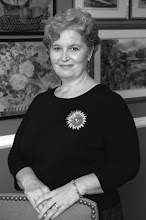
A year of progress, 2010 has taken us important steps closer toward the Foundation’s mission of supporting research that will lead to a cure, education and dystonia awareness, and those individuals affected by dystonia and their families. The DMRF is proud of the work we have done these past 12 months, and we thank our many volunteers, advocates, donors and our local and national leaders. We have achieved all we have in 2010 because of the support of these remarkable people.
This year, we continued our commitment to funding of cutting edge-research and fellowships and approved 15 research projects. The Foundation’s Science Officer worked with another 5 investigators to develop contracts that will help us fill in some of the missing pieces of this big dystonia puzzle. The DMRF is pleased to partner with the Foundation for Dystonia Research to support a better understanding of dystonia. The DMRF is also pleased to partner with Tyler’s Hope for a Dystonia Cure in supporting phase II of the BioFocus project, an important scientific research project that is designed to identify and validate potential targets, that will hopefully lead to drug development for DYT1 dystonia. Our work in serving as an administrative center for the Dystonia Coalition, an NIH sponsored clinical research project, continues.
The DMRF has been honored to work with the Dystonia Advocacy Network (DAN) for the past five years. Joining with members of the Benign Essential Blepharospasm Research Foundation, the National Spasmodic Dysphonia Association, the National Spasmodic Torticollis Association and DySTonia, Inc., we have worked to make sure the legislative and policy needs of the dystonia community are heard in Washington, D.C. This past year, DMRF President, Art Kessler, provided testimony to the FDA and longtime DMRF leader, Kathy Rentfrow, provided testimony before the Senate Defense Appropriations Subcommittee regarding dystonia research funding. The DAN has worked to ensure that all patients have access to all approved treatments for dystonia and just last week met with key individuals at the Centers for Medicare Services regarding this issue.
We welcomed new support groups to our network of local resources working tirelessly to make sure people know they are not alone in this battle. Our regional meetings helped to provide education and connect people with one another.
Our commitment to our mission remains resolute, and we look forward to continuing our progress into 2011.
But we always remember that we can’t do it without you. Thank you for all you have done this past year. I wish you and your families all the best in the New Year ahead.





















